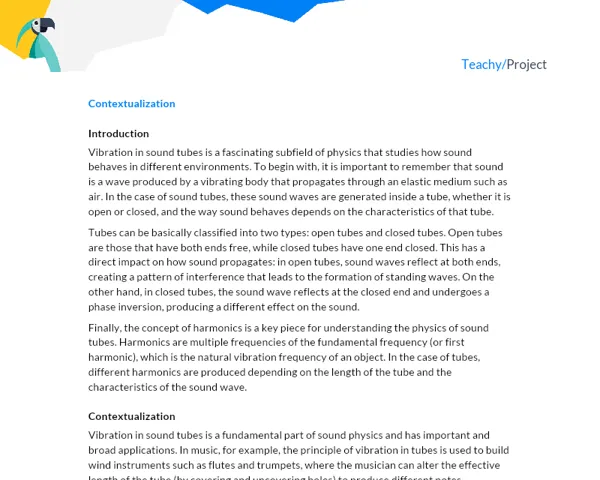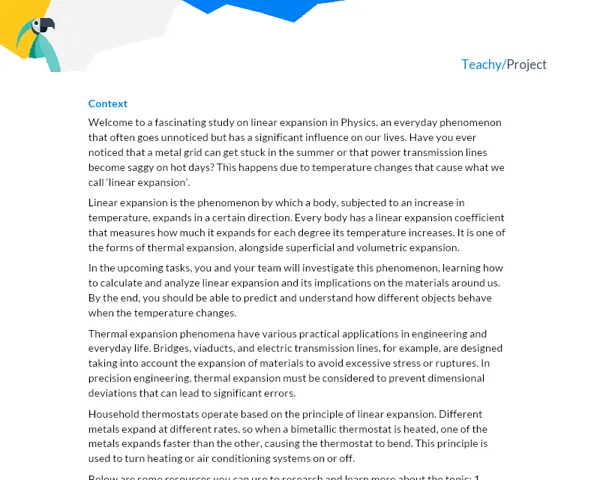Setting the Stage
Waves. You've probably encountered them in countless contexts—from physics to music. They are ubiquitous in our surroundings and fundamental to many aspects of our lives. Yet, what exactly are waves? And how do they work their magic? In this project, we will dive into the fascinating physics of waves.
Introduction
A wave can be defined as a disturbance that travels through a medium. It transfers energy from one place to another without the direct transport of matter. There are two main types of waves: mechanical waves, which require a physical medium like air or water to propagate, including sound waves and ripples on a pond; and electromagnetic waves, which can travel even through a vacuum, including light, X-rays, and radio waves.
Waves are characterized by several properties such as frequency, amplitude, speed, and wavelength. Understanding these properties is crucial to comprehending the behavior and applications of waves.
Some waves are quite noticeable, such as ripples on the surface of water or the sound waves you hear. Other waves, however, are imperceptible to the naked eye yet play critical roles in our daily lives. Electromagnetic waves, for instance, are responsible for the functioning of many of our electronic gadgets.
Real-World Applications
The study of waves has far-reaching practical applications. For example, electromagnetic waves are the foundation of all modern communication, from television and radio broadcasting to the internet and cell phones. Furthermore, understanding electromagnetic waves is essential to comprehending how our own eyes work, perceiving different frequencies of light as distinct colors.
Mechanical waves, on the other hand, find applications in diverse fields including civil engineering (to understand how buildings withstand earthquakes), medicine (ultrasound and shockwave therapies), and geology (to study earthquakes and the Earth's internal structure).
You'll be surprised by just how many things around us are influenced by waves!
Hands-on Activity: "Wave it Up: Mechanical vs. Electromagnetic Waves"
Project Goal
The primary objective of this project is to help you understand and differentiate between mechanical and electromagnetic waves, providing hands-on experience through simple yet engaging experiments.
Project Description
Your team will be responsible for designing and conducting two experiments, one related to electromagnetic waves and the other to mechanical waves. Following the experiments, your team will produce a detailed report explaining the theory, execution, and conclusions drawn from your project.
The experiments should be designed to:
- Demonstrate the propagation of waves (both mechanical and electromagnetic).
- Exemplify the interaction of waves with other objects (e.g. reflection, refraction).
- Observe the influence of different variables (such as frequency, amplitude) on wave propagation.
The project will be carried out in groups of 3 to 5 students and will span a period of one month. Each student is expected to dedicate approximately 5-10 hours to the project.
Required Materials
The list of materials will depend on the specific nature of the experiments designed by your group. This is to encourage your innovation, problem-solving, and creativity. However, as a starting point, we suggest:
- For mechanical waves: ropes, springs, or a water tank could be useful.
- For electromagnetic waves: light bulbs, lasers, mirrors, lenses, and other materials that can be useful when experimenting with light.
You are encouraged to think outside the box and include any other materials that will be useful for your experiments.
Step-by-Step
- Group Formation: Teams of 3 to 5 students will be formed.
- Planning: Teams will plan two experiments—one for mechanical waves and one for electromagnetic waves—that fulfill the guidelines stated above.
- Instructor Review: Experiment plans will be submitted to the instructor for review and approval.
- Experiment Execution: With the instructor's approval, teams will conduct their experiments and record their results.
- Report Writing: After conducting the experiments, each team will prepare a detailed report.
Project Deliverables
-
Experiment Plan: This document should contain a detailed description of the two experiments that will be conducted by your group, including the objective, materials needed, and procedure.
-
Project Report: This will be a comprehensive document containing:
- Introduction: Here, you should provide context for the topic, discuss its real-world relevance and applications, and state the goal of your project.
- Body: This section should explain the theory behind mechanical and electromagnetic waves, detail the two experiments conducted, describe the methodology used, and finally present and discuss the results obtained. Pay special attention to explaining how your experiments demonstrate the characteristics and properties of waves.
- Conclusion: Wrap up your report by summarizing the main points, highlighting what you learned, and stating any conclusions drawn from your project.
- References: Finally, you should list the sources that you used to develop your project including books, web pages, videos, etc.
All parts of the report should flow together to form a cohesive document. The report should be clear, concise, and accurate, always remembering to properly cite any sources of information used.


